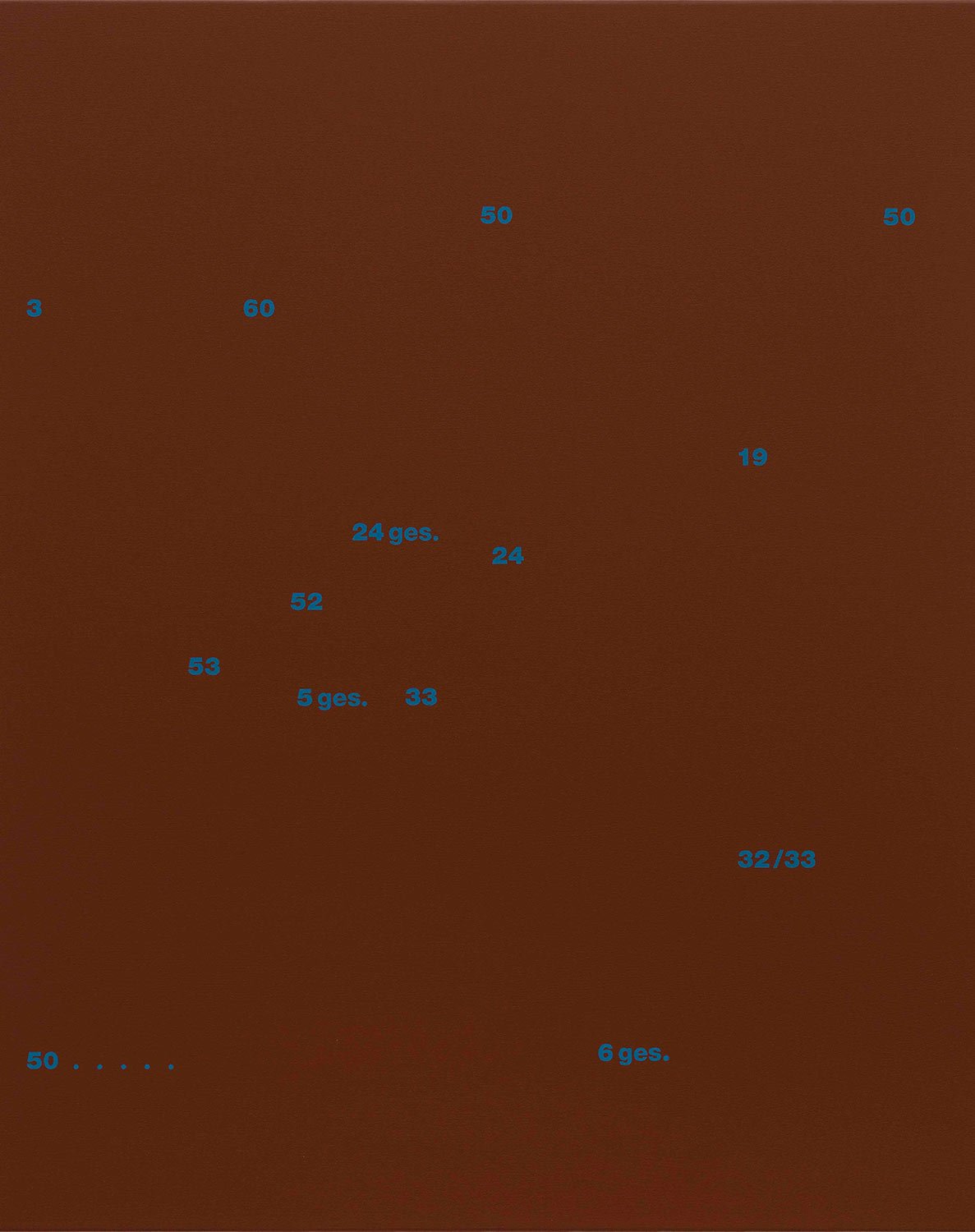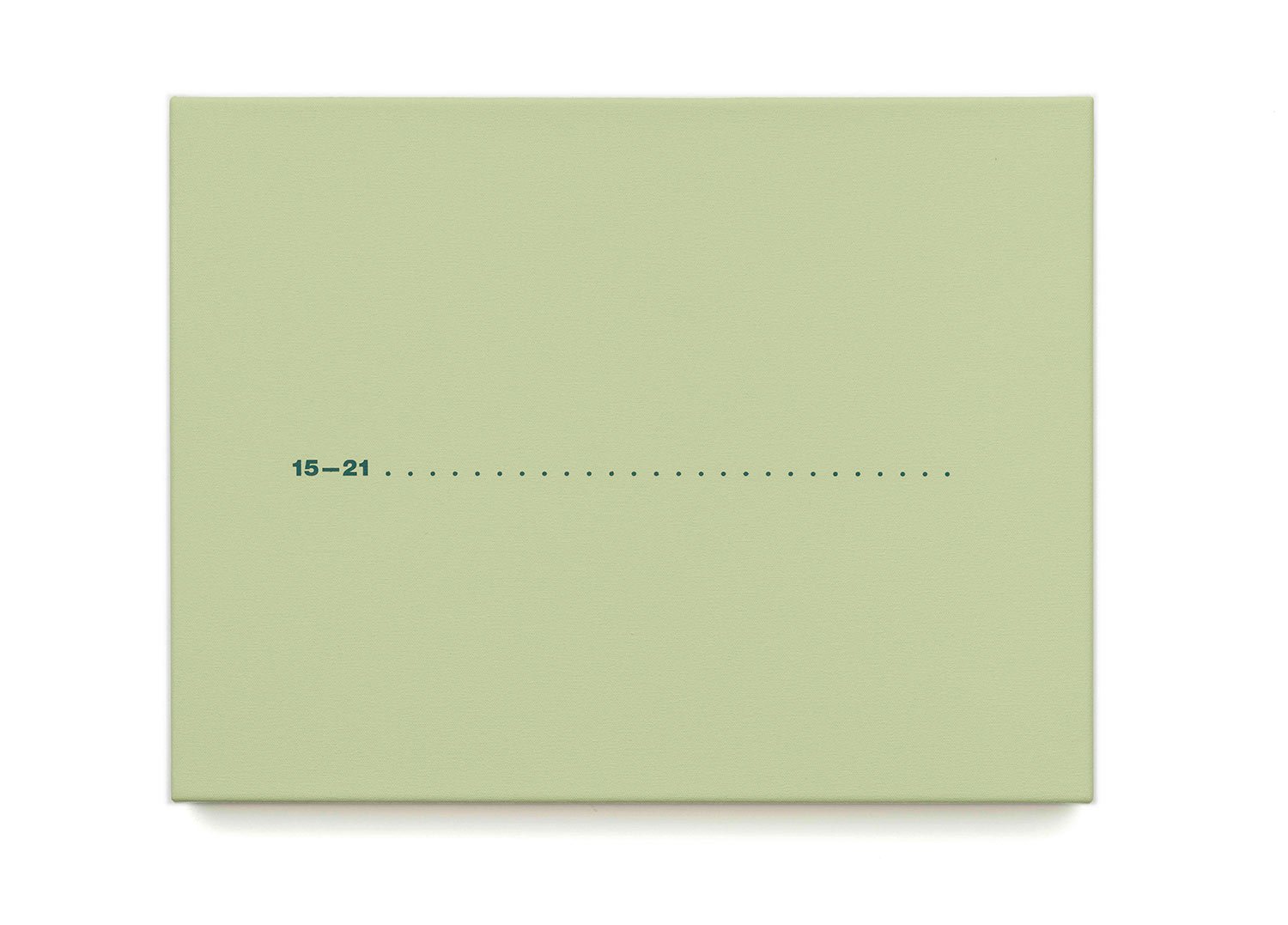Francine Savard - Le code
2022 | FRANCINE SAVARD
LE CODE
MONTREAL
Jan 29 - May 7
Francine Savard, Cartographie des Bergers d’Arcadie (Nicolas Poussin), 2021, Acrylic on canvas, 39 3/4’’ x 31 1/4’’ x 1 5/8”.
Originally from Montreal, where she still lives, Francine Savard first completed graduate studies in graphic design at the Royal College of Art in London before obtaining a master’s degree in visual arts at UQÀM in 1994.
Savard’s work is rooted in an impressive love affair with painting, its history as well as the writings about it. Here practice is mainly embodied in individual paintings and monochrome sets, all produced with meticulous detail. The monochrome grounds are often combined with language and numbers, or sometimes simply adopt unusual shapes.
As evidenced by the monochrome surfaces, it above all through the investigation of colour that the artist began her meditation on painting more than twenty years ago. It is around this axis that the entire corpus of the artist unfolds. Already in 1998, with exhibitions titles such as Le mensonge de la couleur or La chambre à peinture, she affirms loud and clear what it is all about! It was also in 1997-98 that the artist presented Les couleurs de Cézanne dans les mots de Rilke, 36/100 – essai, a key work, today in the collection of the Musée d’art contemporain de Montréal. In this singular painting, the artist composed a column of coloured plates where she imagined the colors of Cézanne’s landscapes based on the descriptions provided by Rilke in his correspondence about this artit’s paintings. What, indeed, is an earthy green? Or a wet brown? The in another work titled Le temps qu’il fit (2014), Savard gave colour to the predicted weather for Montreal on specific dates over a twelve-month period; the result being a series of horizontal paintings combining descriptions and striking hues.
In her extensive meditation, Savard looks at the corpus of several painters whose work she admires. Her paintings bear multiple references to these heroes. It is this dissecting gaze that now leads Savard to offer us an intriguing reading of Nicolas Poussin’s compositions through the lens of their reproduction in a catalogue raisonné from 1914. Her recent paintings make associations between observations of Poussin’s work by the art historian Otto Grautoff and certain painting series by Charles Gagnon and Yves Gaucher.
The journey the artist offers us in this most recent quest is accompanied by a publication of 50 editioned copies.






























